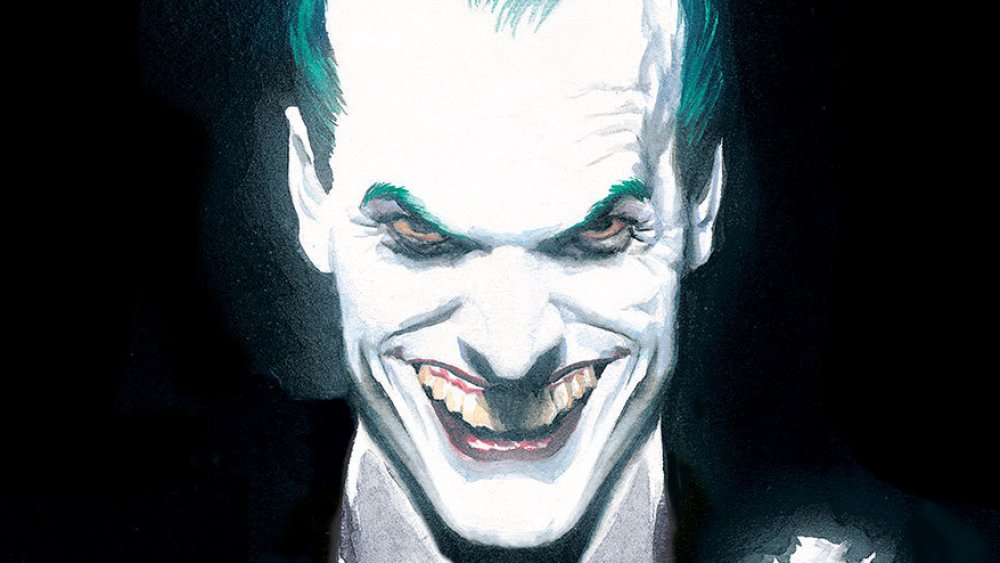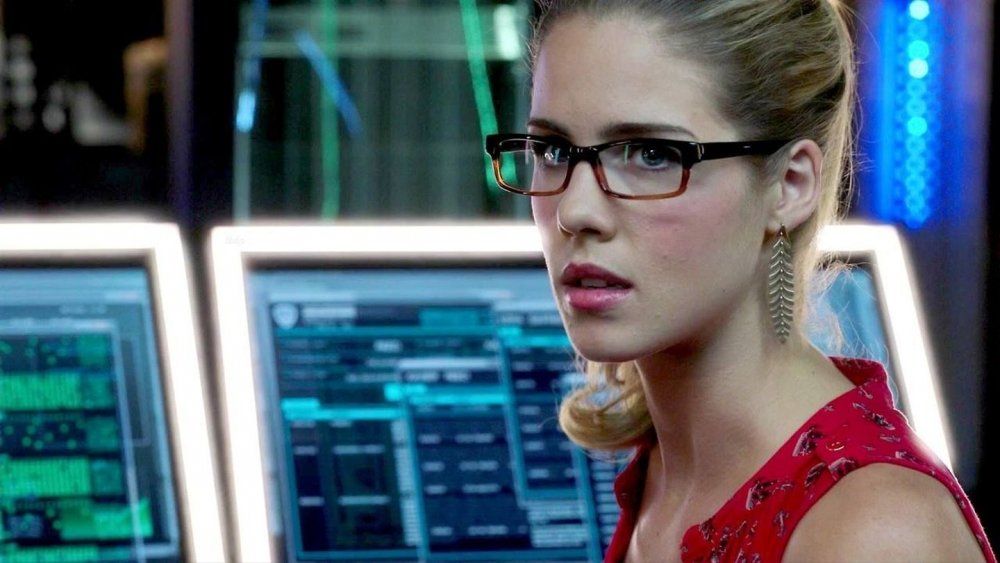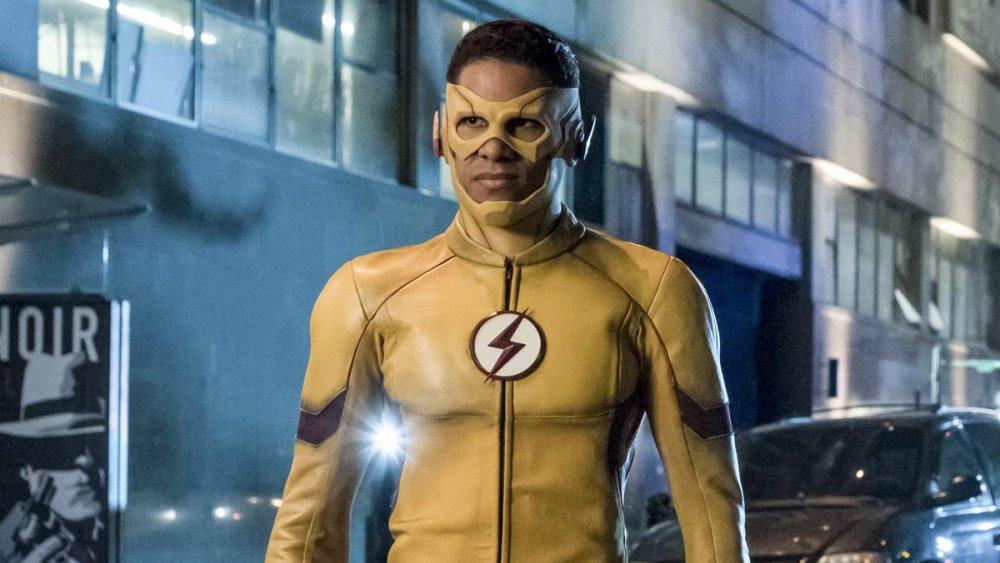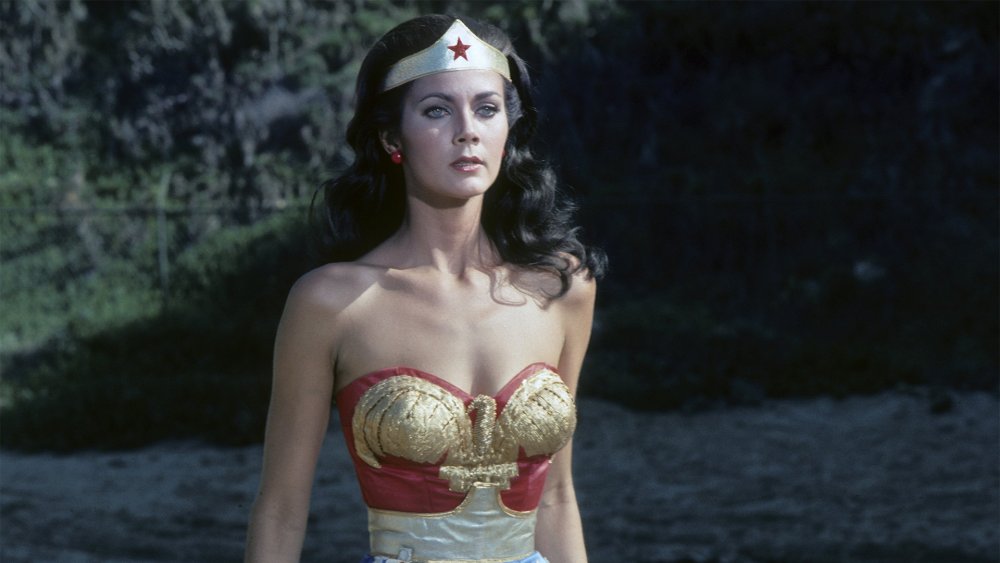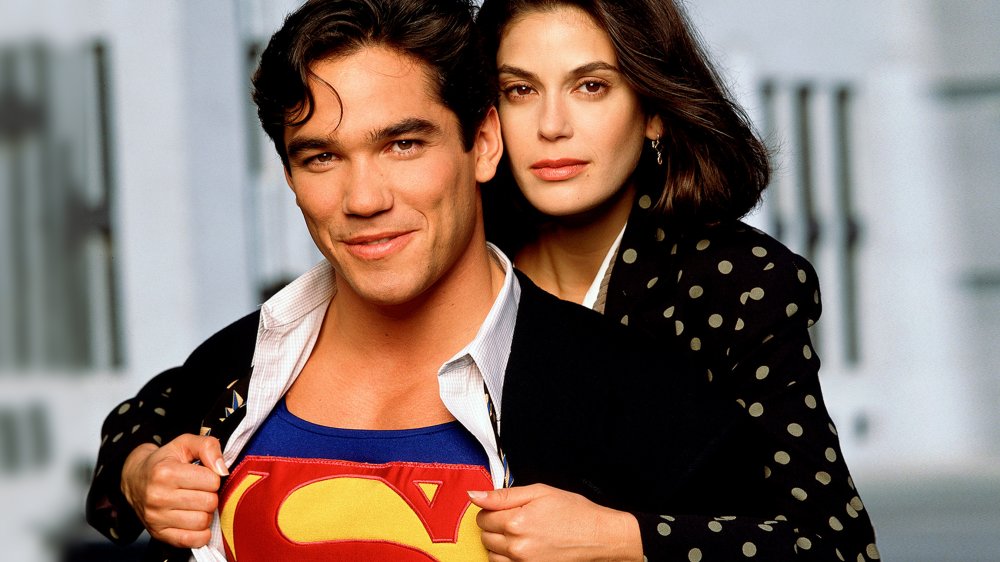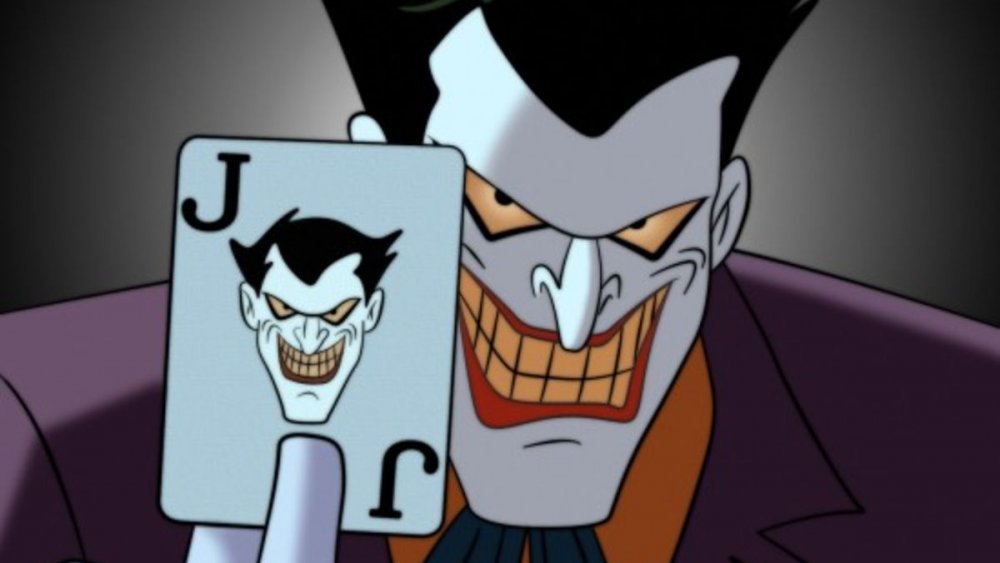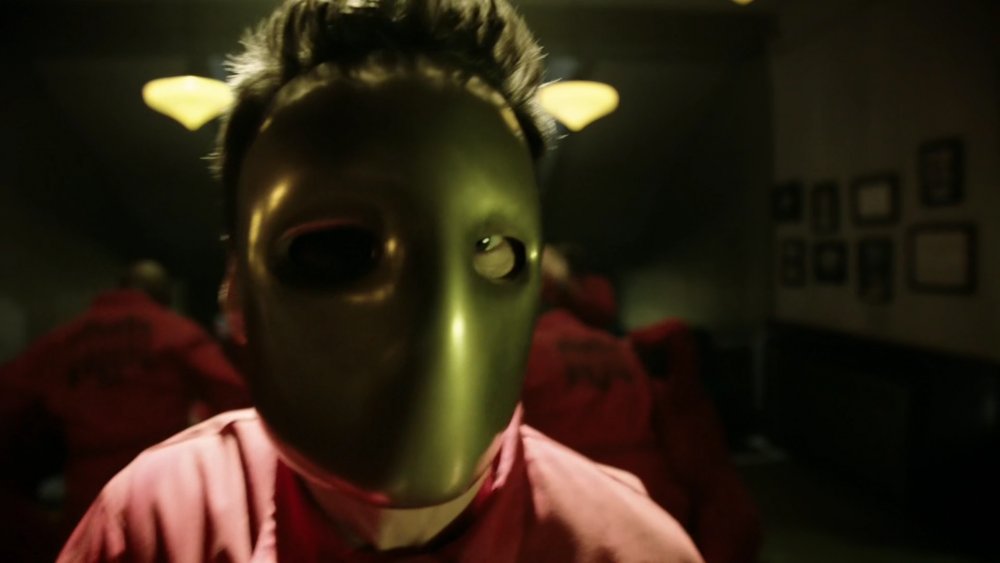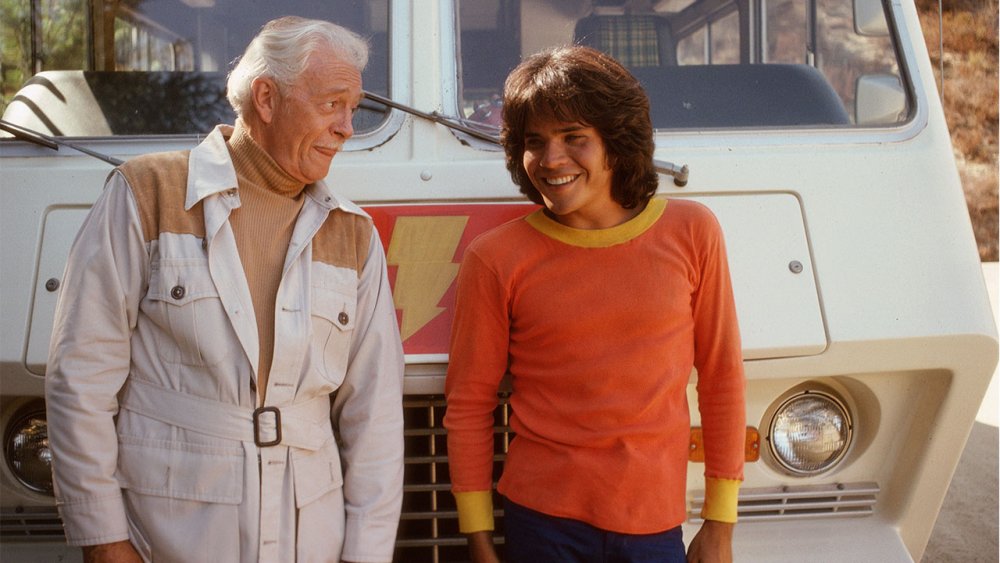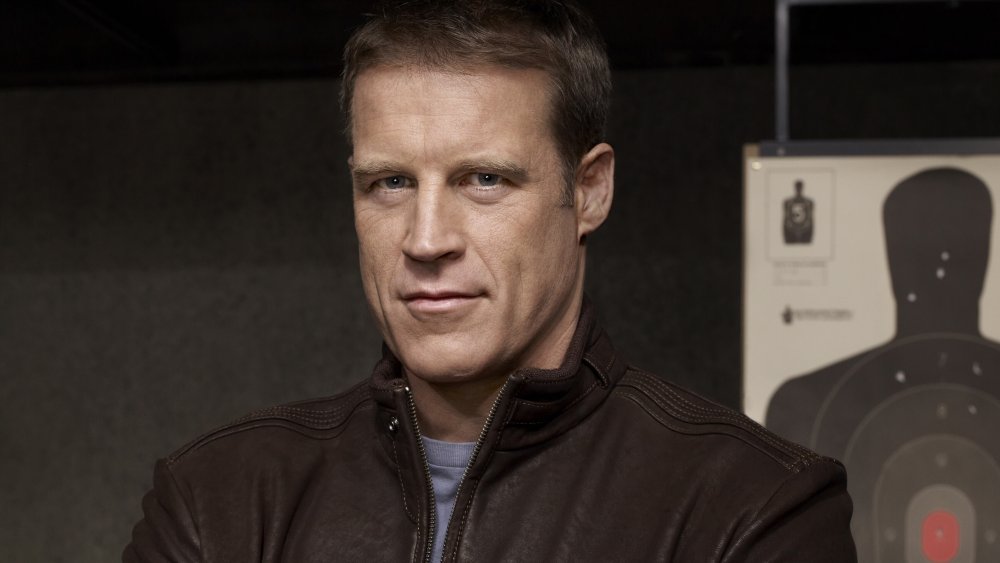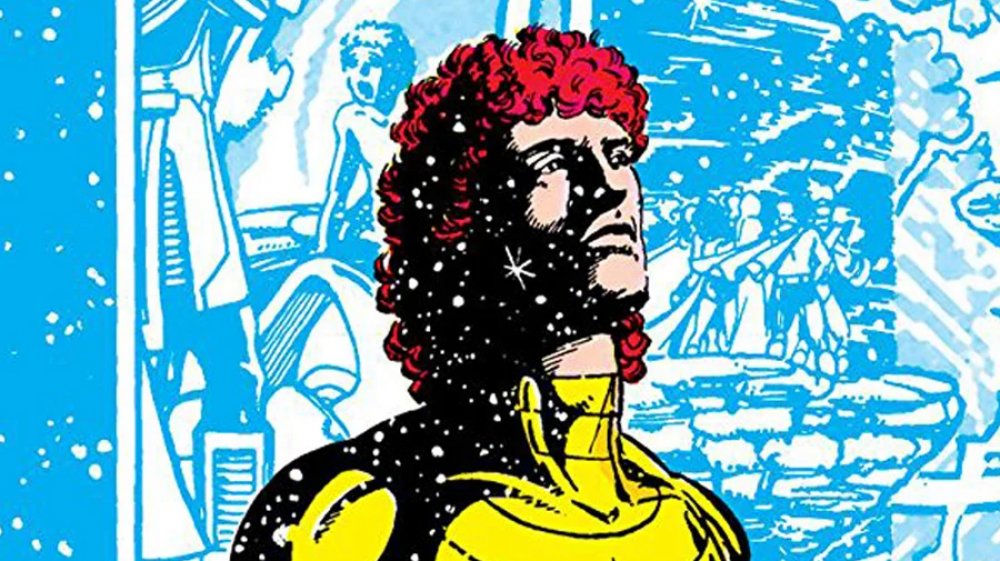DC Characters That Were Mysteriously Missing In Crisis On Infinite Earths
Forget Infinity War. The CW's Crisis on Infinite Earths really was the most ambitious crossover event in history. The five-episode story, which stretched across episodes of Supergirl, Batwoman, The Flash, Arrow, and Legends of Tomorrow, was one big, sappy love letter to DC Comics' various TV and film adaptations.
Still, a few big names were missing. Crisis on Infinite Earths paid tribute to everything from Tim Burton's Batman to Batman '66 to the Justice League feature film. Heck, even Crisis' original writer, comic book scribe Marv Wolfman, made a cameo. And yet, a couple of the Arrowverse's most familiar faces didn't show up for the ultimate crossover. Key characters from the original Crisis comic were no-shows. Some of its biggest TV and movie hits weren't featured at all.
Crisis on Infinite Earths was a monumental achievement — and a lot of fun — but it would've been even better if the following DC characters had showed up to play. In the end, we plain missed these folks. If you're a DC super-fan, you probably did too.
Felicity Smoak
Felicity Smoak wasn't supposed to be a major player in the Arrowverse. Emily Bett Rickards' character was originally conceived as a one-off guest appearance, designed to pop up in a single episode and nothing more.
History had other plans. Rickards' winning performance, as well as her undeniable chemistry with Arrow star Stephen Amell, quickly convinced Arrow's producers to bring Felicity back for more. It took less than a season for Felicity to become part of Arrow's regular cast. By season two, she was Arrow's heart and soul — and ultimately ended up as both Oliver Queen's wife and the mother (step- and biological) of his children.
That's why it's so weird that Felicity sat out Crisis entirely. Sure, Rickards left Arrow after season seven, but she's returning for the series finale (which follows the end of Crisis by mere weeks). She couldn't pop by for a quick cameo in the big crossover event, too? The Crisis wasn't just the biggest threat the Arrowverse has ever faced, it was also an epic sendoff for Oliver Queen. As such, it just felt strange that Felicity wasn't there to say goodbye.
Kid Flash
In the comics, Crisis on Infinite Earths was Wally West's time to shine. In Crisis on Infinite Earths #8, Barry Allen, Wally's mentor, sacrificed himself to destroy the Anti-Monitor's powerful antimatter gun, saving the remaining universes from destruction. Once the Anti-Monitor's plans are foiled, Wally West sheds the name Kid Flash and takes over for Barry. Wally was more than a sidekick. He was the DC Universe's main Flash for almost 25 years.
Of course, on television, neither Barry nor Flash star Grant Gustin are going anywhere. In the speedster ranks, Kid Flash still plays second fiddle. Even so, it would've been nice to see Kid Flash make an appearance in the CW's big crossover. Wally has been a regular fixture in the Arrowverse since 2015, when actor Keiynan Lonsdale stepped into the role, and while we haven't seen much of Kid Flash since Legends of Tomorrow's season three finale, Kid Flash is already scheduled to return to The Flash after Crisis. Given everything that went down during the event, Barry really could've used his help here, too.
Of course, if you really want to see what Wally and Felicity were up to during Crisis on Infinite Earths, you can always check out DC's spinoff comic, which was co-written by Crisis creator Marv Wolfman. That's not the same as seeing the characters onscreen, though. Their absence stood out like a sore thumb.
Wonder Woman
Crisis on Infinite Earths had a Batman. It had three different Supermen. Where the heck was Wonder Woman? The third and final member of DC's trinity isn't just one of the best-known superheroes on the planet. The Amazonian warrior was the star of her very own television show, which debuted in 1975 and starred actress and singer Lynda Carter.
In fact, Carter already has a role in the Arrowverse. In Supergirl, she plays Olivia Marsdin, a shape-shifting alien who, at one point, was also the president of the United States. Carter appeared in five episodes of Supergirl, and we're going to assume that executive producer Greg Berlanti and the rest of the Crisis team still have her phone number.
Maybe Warner Bros. didn't want Crisis on Infinite Earths to steal any thunder from Wonder Woman 1984. Still, a cameo wouldn't have meant that Carter needed to suit up. An older, retired Diana Prince would've fit in well with Kevin Conroy's grizzled, jaded Bruce Wayne and Brandon Routh's greying Man of Steel. What a missed opportunity.
Anyone from Lois & Clark
The CW's mega-crossover featured characters from almost every major television show based on a DC comic. Birds of Prey? Batman '66? The '90s version of The Flash? They're all there. Heck, even Lucifer, which is only tangentially related to the DC Universe, got a brief but memorable nod.
But the key word there is "almost." Lois and Clark: The New Adventures of Superman, the hit '90s show that re-imagined the relationship between Lois Lane and Superman as a Moonlighting-style romantic comedy, didn't get a single nod. No cameo. No offhand mention or super-obscure Easter egg. Heck, even Super Friends got a nod in Crisis on Infinite Earths, but Lois and Clark, a legitimate ratings hit? Nothin'.
Even stranger, both Lois and Clark's stars have established relationships with the Arrowverse. Dean Cain, who played Superman on Lois and Clark, has a recurring role on Supergirl as Kara Danvers' adopted father. Teri Hatcher played the Daxamite queen Rhea, Supergirl's second season big bad. Both actors are clearly open to appearing on the CW. They've done it before. Just, oddly, not this time.
The Joker
The Joker plays a minor role in Crisis on Infinite Earths, but you'd be forgiven for not noticing. He doesn't appear onscreen. Nobody ever says his name. Still, he's there. When our heroes visit Earth-96 to recruit Brandon Routh's Man of Tomorrow, the alternate-universe Superman mentions that a "reject from Gotham" gassed the Daily Planet, killing 48 people.
That's a direct reference to Mark Waid and Alex Ross' graphic novel Kingdom Come, on which Superman-96 is based. In that story, the Joker attacks the Daily Planet and murders Lois Lane, Jimmy Olsen, and a bunch of Superman's other friends. That begins a chain of events that concludes with Superman hanging up his cape and retiring, leaving the fate of the world in the hands of a new generation of heroes.
Routh's Superman has the same tragic backstory — he even sports the black-and-red insignia that the Kingdom Come Superman wears when he comes out of hiding — but it would've been even more powerful if Crisis had been able to actually show the Clown Prince of Crime. Maybe Warner Bros. didn't want to distract from Joaquin Phoenix's award-winning turn as the character. Maybe the Arrowverse has plans for Joker down the line. Who knows? Still, something — even if it was just Batman: The Animated Series actor Mark Hamill performing the Joker's signature laugh offscreen — would've gone a long way.
Psycho-Pirate
Crisis on Infinite Earths did a pretty good job including all of the comic book miniseries' major characters. The Monitor? Check. The Anti-Monitor? Check. Pariah, Harbinger, and more superheroes than you could ever possibly count? Check, check, and check.
One big name is missing, though. In the original comic, Psycho-Pirate, a villain who wears a mask that projects emotions into its victims, was a major piece of the Anti-Monitor's multiverse-destroying scheme. During the Crisis, Psycho-Pirate used his powers to sway villains to the Anti-Monitor's side and turned various heroes against each other, buying time for the Anti-Monitor to further his plans.
After the Crisis ended and all of DC's universes were merged into one, Psycho-Pirate was one of the few characters who remembered the Multiverse and the cosmic battle that unfolded. The memories end up driving him mad. Given that Psycho-Pirate actually showed up during the previous CW crossover, Elseworlds, it's extremely surprising that Bob Frazer didn't return to reprise the role. But he didn't, and here we are.
Billy Batson
Shazam! is one of the best films in the entire DCEU — and maybe the most charming DC Comics movie ever made — but before he was a big-screen star, modern audiences knew the other Captain Marvel best from his television show. From 1974 to 1976, a live-action Shazam television show was part of CBS' Saturday morning lineup, where it aired alongside The Secrets of Isis, with which Shazam sometimes crossed over.
It's the kind of show that seems tailor-made for a Crisis on Infinite Earths appearance, although the ages of everyone involved might've made it hard for Billy Batson's superpowered alter ego to appear. Jackson Bostwick, who played Captain Marvel in the first season, is 74 years old. John Davey, who took over for Bostwick part way through season two, hasn't acted for over 30 years.
However, Michael Gray, who played the teenage Billy Batson, is only 68 — and, as his appearances on Archer prove, he's not above a gimmicky cameo. Crisis on Infinite Earths had no problem showing aging versions of DC heroes. Look at Brandon Routh's Kingdom Come Superman or Kevin Conroy's murderous Bruce Wayne. Billy Batson could've easily joined their ranks, at least for a couple of minutes.
Christopher Chance, The Human Target
The Human Target may not be the best-known DC character, but that hasn't stopped him from getting his own television show, not once but twice: once in 1992, when Rick Springfield played the title character, and another in 2009, fronted by Boston Legal and Fringe star Mark Valley.
It's easy to see why. Christopher Chance lends himself well to a TV procedural. In the comics, Chance is a bodyguard who assumes the identities of people who have been targeted for assassination in order to flush out their attackers. It's a setup that's perfect for a case-of-the-week format and gives the lead actors plenty of opportunities to stretch their chops.
The Arrowverse actually has its own take on Christopher Chance — Wil Traval played the Human Target on two episodes of Arrow — but if Crisis really wanted to be the ultimate DC TV crossover, it would've brought in Springfield or Valley for a scene or two. It shouldn't have even been that hard to get one of the actors — or, possibly, both. Springfield had a recurring role in a different CW show, Supernatural, in 2016, while Valley appeared on The Flash in 2018 when he played the lawyer prosecuting Barry Allen for murder.
Alexander Luthor Jr.
Crisis on Infinite Earths had plenty of Supermen, but only one Lex Luthor. It should've had another. In the Crisis on Infinite Earth comic book, Alexander Luthor Jr., the son of Earth-3's Lex Luthor — a hero who fought against the evil Justice League analogue, the Crime Syndicate — gained special abilities as a result of his trip through the multiverse. He used those powers to help unite the heroes from various Earths, and later led the fight that put the Anti-Monitor down for good.
He's an important part of the Crisis on Infinite Earths story, and it would've been fun to see him appear in the CW crossover, too. We even have the perfect actor to play him. Michael Rosenbaum, who played Lex Luthor on Smallville, remains a fan favorite to this day. Rosenbaum passed on Crisis because he wasn't given a schedule, any information about his part, or much of a paycheck. If he'd been given a meaty role like Alexander Luthor, we suspect he might've changed his mind.
Heck, Rosenbaum wouldn't have even needed to shave his head — something he's been hesitant to do in the past — for the part. While Lex is bald, Alexander has a full head of red hair. Oh well. At the very least, Alexander's absence from Crisis means we're saved from a TV adaptation of Infinite Crisis, Crisis on Infinite Earth's extremely controversial sequel. So, y'know. Silver linings.
